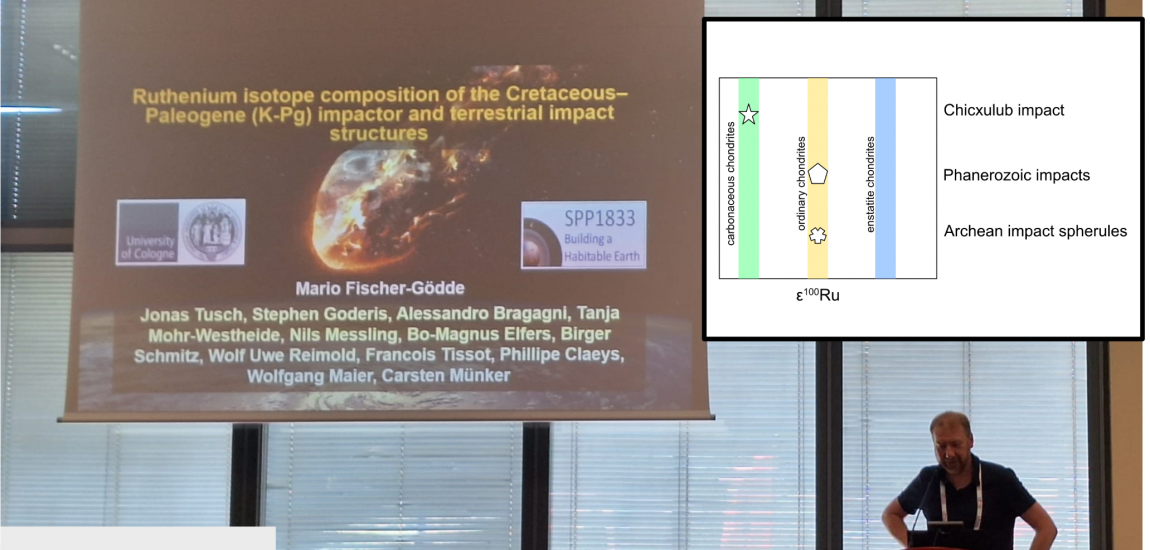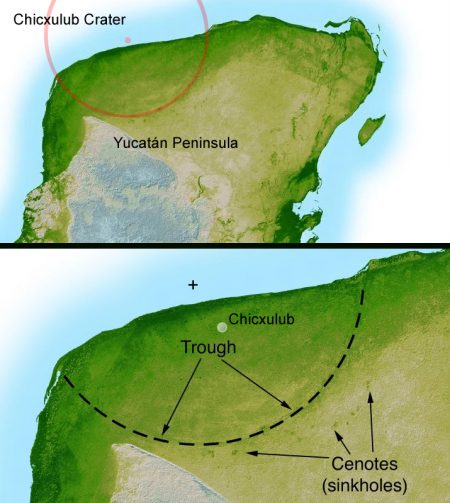
What’s left of an impactor – A Ru isotope study

After an impact all that’s left is more or less a hole in the ground and often not even that due to erosion. As a result, it’s difficult to make implications on the impactor itself. Especially if the impact occurred a few million years in the past, there is not really much left except for dust particles in some sediments and perhaps some impact spherules. Trace elements can give some insights on the composition of the impactor but “mixing” with the host rock or the bulk analysis of the sediments that incorporated the impactor-dust complicates the identification of the nature of the impactor. Isotopes can be more reliable in identifying the nature of the meteorite. For example, Trinquier et al. (2006, EPSL) used chromium isotopes to make implications on the Chicxulub impactor that hit the Yucatán Peninsula (Fig.1) around the KPg boundary (that most likely had a large effect on the mass extinction of non-avian dinosaurs and other species and, therefore, gave rise to the diversification of mammals) and argued that the Chicxulub impactor was most likely a carbonaceous chondrite. However, chromium is also relatively abundant in terrestrial rocks leading to a “contamination” of the extraterrestrial material with terrestrial chromium.
New data by Mario Fischer-Gödde and co-workers provided further evidence on the nature of the Chicxulub impactor by using ruthenium isotopes. Ruthenium is a highly siderophile element that is usually highly depleted in crustal rocks (terrestrial ruthenium is not abundant enough to “contaminate” the extraterrestrial ruthenium) and displays very distinct isotope compositions in different meteorite classes like carbonaceous chondrites, ordinary chondrites, and enstatite chondrites (Fig.2, cf. Fischer-Gödde 2017; 2020, Nature). Consequently, it is very useful to identify the nature of meteorite impactors. Using this approach, Mario Fischer-Gödde and co-workers were able to verify the findings of Trinquier et al. Furthermore, they also studied more phanerozoic impact layers as well as Archean impact spherules which, however, were attributed to impactors with a ordinary chondrite composition. Does it mean that the Chicxulub impact was an outcast by being the only carbonaceous chondrite impactor? Of course not! Ruthenium measurements are very difficult to conduct since they require a lot of sample material (sometimes up to 300g for one datapoint). Consequently, it is difficult to acquire enough sample material. So far not enough impact layers were studied, and we can look forward to more data from Mario in the future.

References
Trinquier, A., Birck, J.L., Allègre, J.C., The nature of the KT impactor. A 54Cr reappraisal, Earth and Planetary Science Letters, Volume 241, Issues 3–4, 2006, Pages 780-788, ISSN 0012-821X, https://doi.org/10.1016/j.epsl.2005.11.006.
Fischer-Gödde, M., Kleine, T. Ruthenium isotopic evidence for an inner Solar System origin of the late veneer. Nature 541, 525–527 (2017). https://doi.org/10.1038/nature21045
Fischer-Gödde, M., Elfers, BM., Münker, C. et al. Ruthenium isotope vestige of Earth’s pre-late-veneer mantle preserved in Archaean rocks. Nature 579, 240–244 (2020). https://doi.org/10.1038/s41586-020-2069-3

